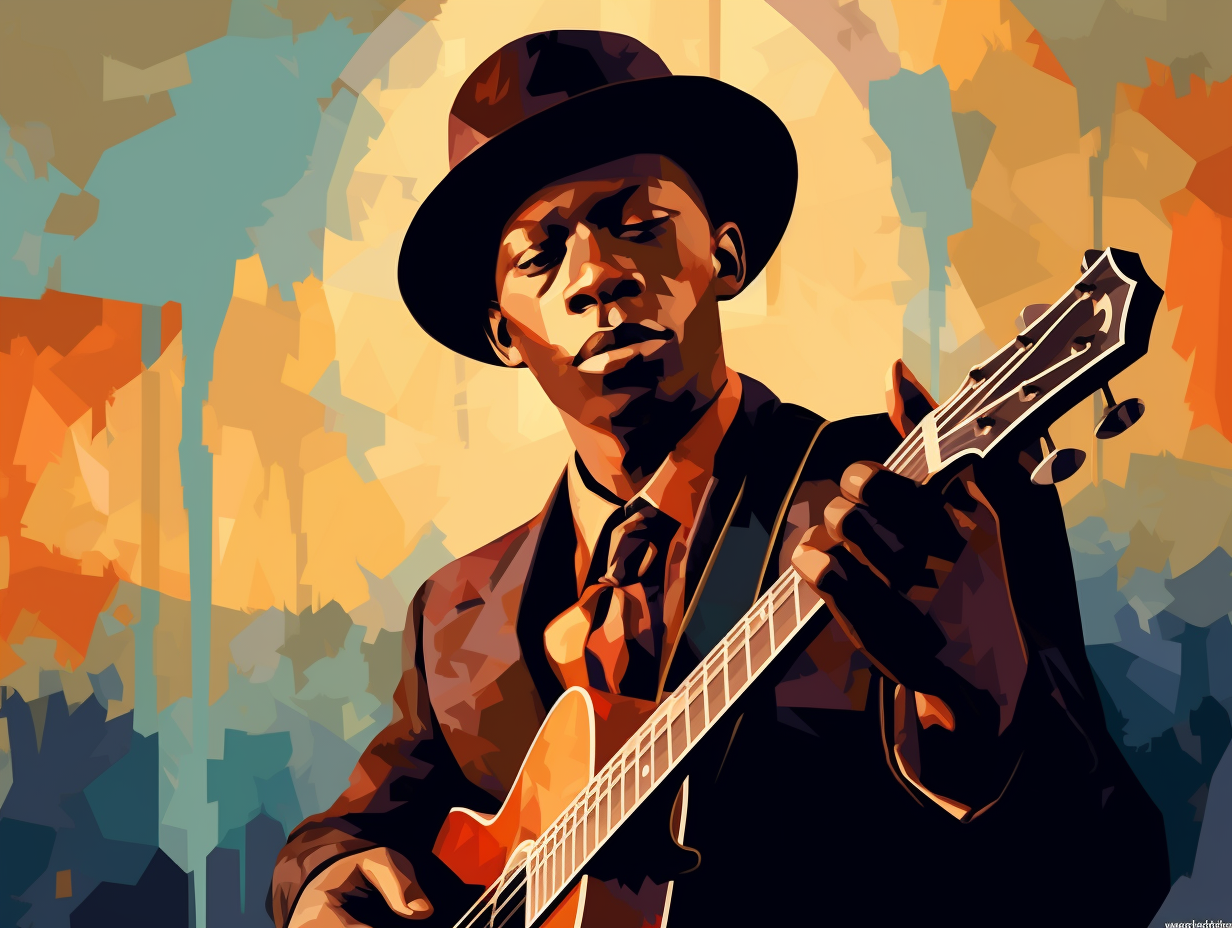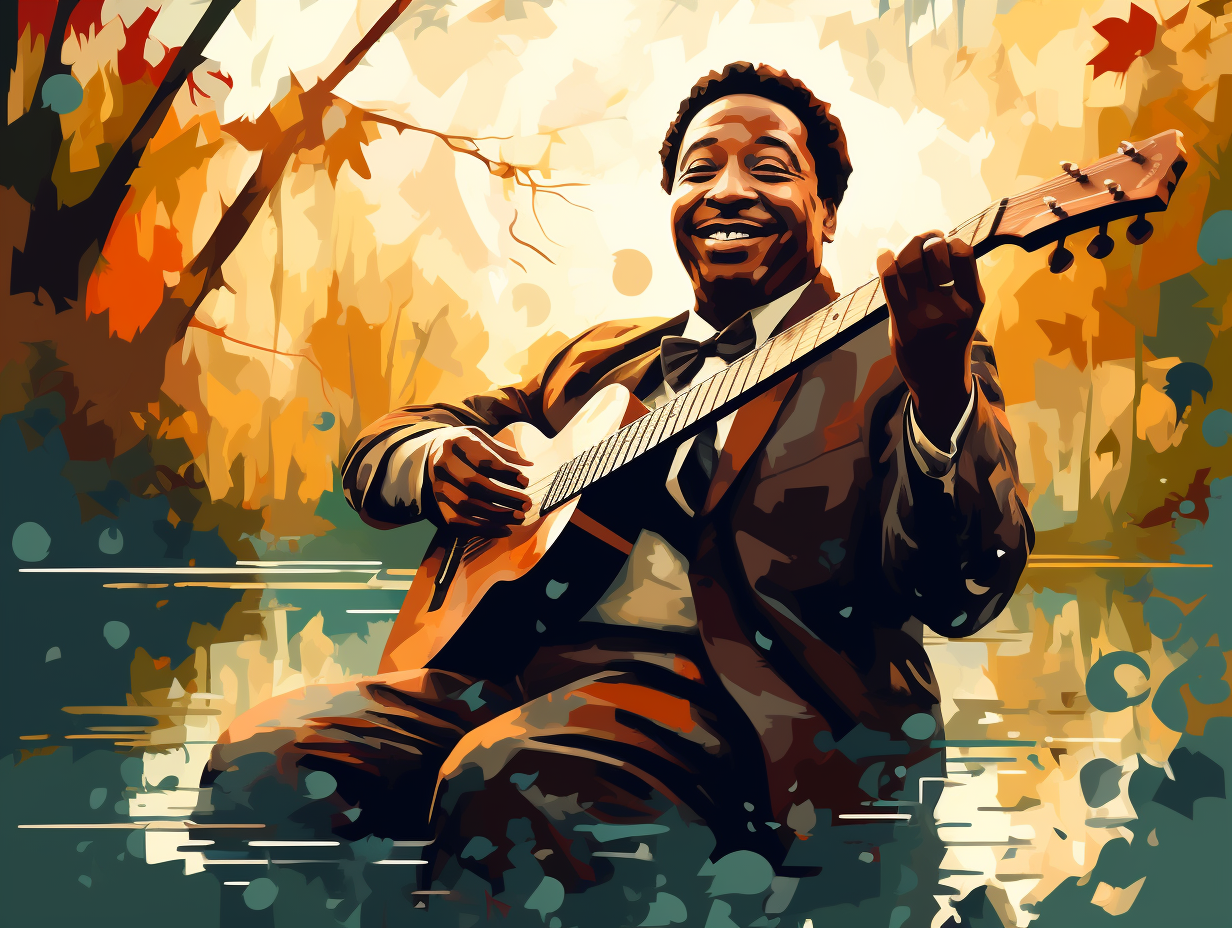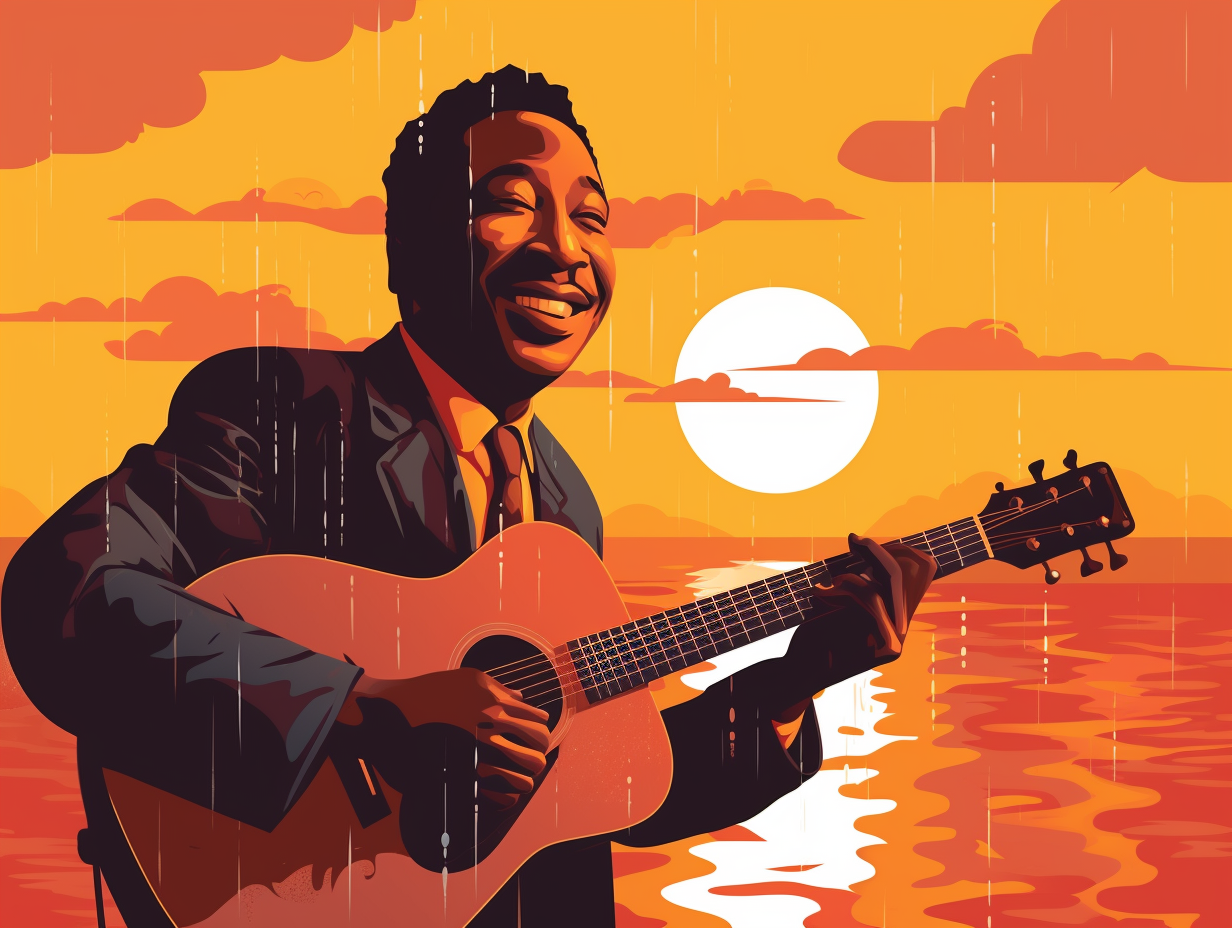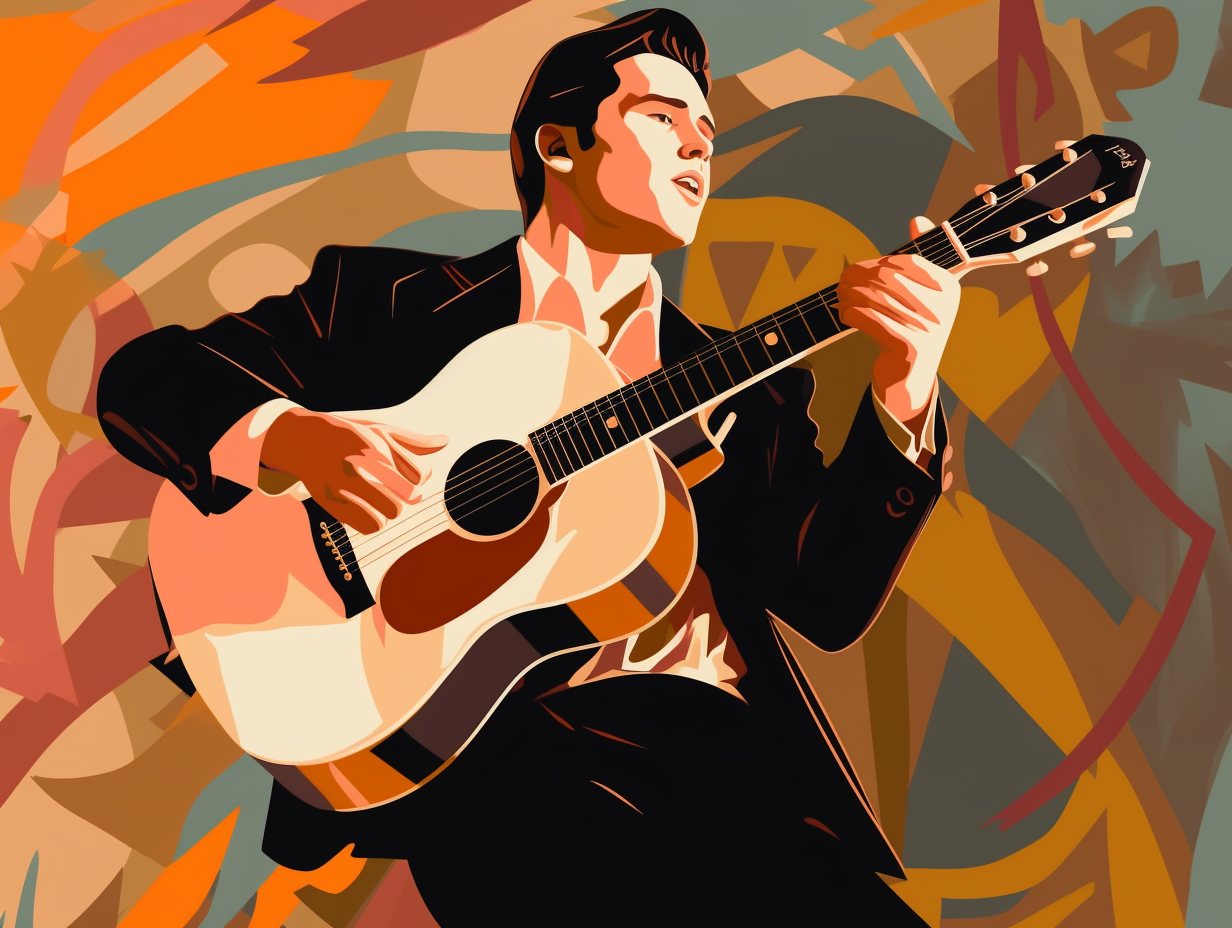From Blues to Legends: Top 12 Unforgettable Fun Facts About Muddy Waters You Never Knew!

1. Snooping Strangers Meet Muddy Waters
When Muddy Waters met a pair of snooping strangers, he didn't slide away, and instead let them into his cabin: In August 1941, two field recordists visited Coahoma County, Mississippi, to study the role of music in African-American daily life and, upon recommendation from locals, they were led to Muddy Waters' home on the Stovall Plantation, where he ultimately agreed to record his iconic songs "Can't Be Satisfied" and "Feel Like Going Home" for posterity with the Library of Congress.
Source => pbs.org
2. Lomax Discovers Talent on a Farm
Before Muddy Waters made a splash on the blues scene, Alan Lomax was busy fishing out his talent on a Mississippi farm: Lomax recorded Waters' earliest tracks at Stovall Farm in Clarksdale, for the Library of Congress in 1941-42, making him one of the pioneers of blues history. These recordings were eventually released as The Complete Plantation Recordings in 1993 and inducted into the Blues Hall of Fame as a Classic of Blues Recording in 2001.
Source => en.wikipedia.org

Did you know blues legend Robert Johnson only recorded 29 songs, yet his impact changed the world of music forever? Discover his fascinating story and how he inspired icons like Eric Clapton. 🎸🌟
=> Fun Facts about Robert-Johnson
3. Mojo Magic in "Got My Mojo Working"
Well butter my biscuit, Muddy Waters sure knew how to bag some magic: "Got My Mojo Working," a song first penned by Preston Foster and recorded by Ann Cole in 1956, later snagged Waters' attention and led to his own rendition with some new lyrics. Inspired by Hoodoo, a touch of folk magic whipped up by African American slaves in the US, the 'mojo' in the song ain't some abstract juju, but rather a real-deal charm bag chock-full of specific ingredients. And though it may have lost some of its authenticity along its journey through a white audience, this blues classic still has folks from Chuck Berry to B.B. King strumming it along its merry, muddy way.
Source => songfacts.com
4. Harmonica Practice in Church
Many aspiring musicians swear by playing in the shower for the perfect acoustics, but Muddy Waters took matters a step further and turned to a higher authority: He honed his harmonica skills by sucking air through the instrument while sitting in a church, utilizing the divine acoustics to amplify the sound and help him improve his technique.
Source => en.wikipedia.org

5. Muddy Waters: Musical Ivy League
If Muddy Waters were a college, he'd be the musical Ivy League, schooling some of the greatest rock legends of all time: the Mississippi maestro's influence spans genres and generations, shaping the sounds of The Rolling Stones, Jimi Hendrix, Cream, Led Zeppelin, B.B. King, Buddy Guy, the Allman Brothers Band, AC/DC, and even cracking his way into Martin Scorsese's cinematic masterpieces.
Source => rollingstoneindia.com
6. Electrifying UK Tour in 1958
Did Muddy Waters ever "sing the blues" across the pond? Indeed he did, like an electrifying fish out of water at the 1958 Leeds Centenary Music Festival: Waters teamed up with Chris Barber Band for a ten-date UK tour that was met with mixed reviews, but his raw, gritty Chicago blues stylings left a kickin' impression on the British music scene, indirectly shaping the future of legendary artists.
Source => udiscovermusic.com
7. Muddy's Home Becomes a Landmark
Blues legend Muddy Waters' home was given landmark status with such fanfare that even the bricks couldn't help but jam: This historic residence, located at 4339 South Lake Park Avenue, became a protected city landmark in 2021 and will transform into the Muddy Waters MOJO Museum, housing memorabilia, art, and photography of the iconic musician. The basement will feature a jam session space and educational recording studio, just as Muddy and his pals used it, while an adjacent lot may bloom into a community garden.
Source => mojomuseum.com
8. Rolling Stones' Muddy Origins
Before the Rolling Stones started their rock 'n' rollin', they took a mud bath in the bluesy waters of Chicago: Muddy Waters, born McKinley Morganfield in 1913, was a monumental blues musician who not only shaped the Chicago blues scene but also inspired the British rock icons, who even christened their band after his tune "Rollin' Stone".
Source => thegamescabin.com
9. Secret Sauce: Crossnote Tuning
Like Picasso with his "Blue Period," Muddy Waters had his own secret sauce when it came to playing the guitar, but instead of vibrant blues on canvas, Muddy was all about tuning his six strings for that sleek, "kah-lee-may-less" vibe: His distinctive "crossnote tuning" or "open G tuning" veered away from the standard E-A-D-G-B-E, tuning his D and G strings down to B and F respectively, resulting in an unforgettable, soul-shaking sound that slid Muddy Waters right into blues legend status.
Source => en.wikipedia.org

10. Muddy Waters and The Rolling Stones' Connection
When you can't get no satisfaction, you just might run into a Hoochie Coochie man: Muddy Waters not only played a pivotal role in shaping The Rolling Stones' sound, but he even invited the iconic British band to open for him during their early US tours in the 1960s. Keith Richards even called him a "magic man" and cited him as one of their biggest influences, with the Stones covering "Mannish Boy" on their 1995 album, Stripped.
Source => cs.mcgill.ca
11. Gourmet Chef of the Blues
If Muddy Waters were a gourmet chef, he'd be known for serving up a hearty mix of rousing guitar licks and bluesy vocal recipes that had folks begging for seconds; but he built his career on the blues: With a career that took flight in 1947, Muddy Waters popularized Delta blues gems like "Rollin' and Tumblin'" and "Baby, Please Don't Go", and left us with legendary tracks like "Hoochie Coochie Man" and "Mannish Boy". Ultimately amassing 62 singles and 13 studio albums, he stuck with Aristocrat/Chess and Blue Sky for most of his musical journey, leaving us with a legacy still savored by blues and rock enthusiasts today.
Source => en.wikipedia.org
12. From Farm to Blues Museum
Before farm-to-table was a trendy concept, Muddy Waters took it to a whole new level by swapping out radishes for riffs: His home on Stovall Farms, where he worked as a sharecropper and tractor driver, has been reconstructed and preserved at The Delta Blues Museum in Clarksdale, Mississippi, complete with the front porch where musicologist Alan Lomax recorded him for the Library of Congress in 1941. Visitors can also check out Muddy memorabilia, including guitars and a life-size wax statue while fawning over ZZ Top's "Muddywood" guitar crafted from one of the cabin's timbers.
Source => earlyblues.org
Related Fun Facts















